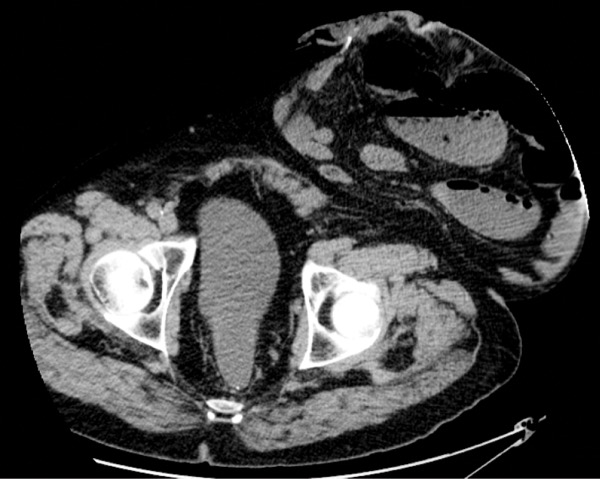At the 2021 annual meeting of the American Hernia Society, Jenny Shao, MD, gave a presentation on repairing parastomal hernias. In the hernia world, these hernias are some of the most troubling.
“Parastomal hernias are really challenging, with high recurrence rates, and potential complications. So, when we choose our patients, we have to choose them wisely, optimize them prior to surgery, and consider the best surgical approach for their goals and quality of life,” said Dr. Shao, an assistant professor of clinical surgery, Division of Gastrointestinal Surgery at the University of Pennsylvania, in Philadelphia.
Parastomal hernias are common after ostomy creation and can cause pain, obstruction, leakage and many other complications.
“Currently, annually over 100,000 new stomas are created [in the United States] and upwards of 50% of these will develop a parastomal hernia,” Dr. Shao said. “These hernias lead to complications such as difficulty pouching, obstruction, pain and many other issues that ultimately lead to reoperation. Hernia repair after primary suture repair can have recurrence rates of 76%, and as high as 80% after stoma relocation.”
Dr. Shao described the parastomal hernia problem as a Sisyphean challenge. “The parastomal problem is that you can never fully close the fascial defect, as you need to be able to bring the ostomy through the abdominal wall. So, if you make your suture repair too lax and you leave too much room for the ostomy, you have issues with recurrence, herniation, pain, bulging, recurrence and probably another reoperation. If you make your stoma fascial defect too tight, the ostomy can lead to strangulation, obstruction, fistulas and, again, reoperation. But even if you get it just right, the recurrence rates can be high.”
Dr. Shao pointed out that there are many surgical options available, including open versus minimally invasive surgery (laparoscopic or robotic), stoma reversal, stoma relocation, primary suture repair and mesh repair.
According to the European Hernia Society’s guidelines on prevention and treatment of parastomal hernias, there is insufficient evidence to make recommendations on the optimal technique to create stomas, watchful waiting for parastomal hernias, the optimal surgical technique to repair parastomal hernias or to dictate what type of mesh should be used (Hernia 2018;22[1]:183-198).
“What the guidelines did recommend, however, was that mesh repair was superior to suture repair,” Dr. Shao noted. “In a systematic meta-analysis (Ann Surg 2012;255[4]:685-695), they found that when compared with mesh, suture repair increased recurrence rates by an odds ratio of 8.9 and [they concluded that] mesh should be used for parastomal hernia repairs.” In the same meta-analysis, in the laparoscopic repair group, the Sugarbaker technique had fewer recurrences than the keyhole technique (odds ratio, 2.3; 95% CI, 1.2-4.6; P=0.016).
In a study of 235 primary elective parastomal hernia repairs performed in five university hospitals and four central hospitals in Finland during 2007-2017, with a median follow-up of 39 months, high recurrence rates were found for the keyhole (35.9%), Sugarbaker (21.5%), sandwich (13.5%), specific funnel-shaped mesh (15%) and other techniques (35.3%) (World J Surg 2021;45[6]:1742-1749). The study found the overall reoperation rate was 20.4%, and complications occurred in 26.3% of patients.
In another study that assessed parastomal recurrences, 38 patients underwent 59 recurrent parastomal hernia repairs, postoperative complications occurred following 52.5% of repairs, the recurrence rate was 45.7%, and recurrence-free survival was worse after two or more repairs (Hernia 2021;25[1]:133-140).
Dr. Shao emphasized that there is no consensus on the best operative approach for handling parastomal hernias. “If we are going to fix these, discussion of realistic goals preoperatively with the patient in conjunction with consideration of patient preoperative factors and patient-specific factors will ultimately be required to make the best operative decision. If I feel I can benefit the patient by repairing their hernia, then I think about repair. But if they are not symptomatic and I don’t think I can improve their quality of life, then watchful waiting is reasonable. The bottom line is reverse the ostomy when you can, repair it when symptomatic; otherwise, watchful waiting can be employed in the right patient.”
Asked to comment on the presentation, Eric Pauli, MD, the chief of the Division of Minimally Invasive and Bariatric Surgery at Penn State Hershey Medical Center, said Dr. Shao’s talk was illustrative of how difficult these operations are and there were several takeaway points. “There is no ‘one size fits all’ solution to parastomal hernias. Surgeons need to be comfortable with watchful waiting and a variety of repair techniques,” he said. “Recurrences are common. Much like a hiatal hernia that has recurred, not every patient needs another operation. Many are improved from before their initial surgery and can be managed nonoperatively.”
Dr. Pauli said he considers a number of factors when choosing a surgical approach for patients with parastomal hernias, including whether or not they need to keep the stoma, whether it needs to stay in the same location or needs to be moved, whether there are skin breakdown issues to manage, and whether there are other hernias present or only the parastomal hernia.


